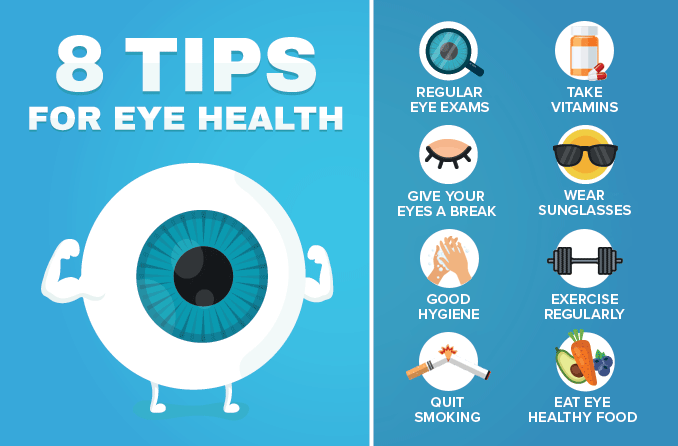“`html
Vision Gesundheit: Prioritizing Eye Health
Understanding Vision Gesundheit
Vision Gesundheit refers to the holistic approach to maintaining eye health and wellness. It encompasses techniques, lifestyle choices, and medical practices aimed at preserving and improving vision. With the increasing prevalence of eye-related issues in the modern world, understanding the key aspects of Vision Gesundheit becomes crucial. This article will explore essential practices to enhance eye health, common conditions affecting vision, and preventive measures that contribute to overall well-being.
The Importance of Regular Eye Exams
Regular eye exams play a vital role in maintaining optimal eye health. An eye examination can detect problems before they become serious, helping to prevent conditions such as glaucoma and macular degeneration. Typically, adults should have their eyes checked every one to two years, while those with preexisting conditions may need more frequent assessments. Furthermore, these exams can help manage existing eye problems and ensure your current prescription is accurate.
Healthy Lifestyle Choices That Enhance Vision
One of the most effective ways to support Vision Gesundheit is through healthy lifestyle choices. A diet rich in fruits, vegetables, and omega-3 fatty acids can significantly benefit eye health. **Green leafy vegetables**, carrots, and fish, such as salmon and sardines, should be included in your meals. Regular physical activity also promotes healthy blood flow to the eyes, reducing the risk of diseases that affect vision. Additionally, avoiding smoking and limiting alcohol consumption can help sustain long-term eyesight.

Common Vision Problems and Their Impact
Understanding common vision problems is essential to effectively assessing and improving eye health. Categories of eye disorders include refractive errors, color blindness, and age-related macular degeneration (AMD). Refractive errors, which include myopia, hyperopia, and astigmatism, are the most common vision issues. These can be corrected with glasses or contact lenses, but a thorough understanding of the symptoms and treatments available is vital. Awareness of age-related conditions is especially critical, as they can significantly affect quality of life.
Refractive Errors: Identification and Correction
The most prevalent vision problems arise from refractive errors. Myopia (nearsightedness) makes it difficult to see distant objects, while hyperopia (farsightedness) affects the ability to focus on close-up items. Astigmatism distorts vision due to irregularity in the cornea’s shape. Corrective lenses, like eyeglasses or contact lenses, typically provide the needed support. For some, options such as **laser eye surgery** may offer a long-term solution to enhance vision effectively.
Understanding Age-Related Macular Degeneration (AMD)
Age-related macular degeneration is another significant concern as it affects central vision and can impair daily tasks. AMD generally occurs in adults over the age of 50, leading to a gradual loss of clarity and visual acuity. The condition can be dry (more common) or wet (more severe). Early detection through regular eye examinations can help manage AMD. Treatments such as nutritional supplements and ocular injections are available, providing options to slow down the progression of the disease.

Proactive Steps for Better Eye Health
Taking proactive steps is essential to ensuring Vision Gesundheit. Understand how to incorporate protective measures and healthy habits into your daily routine. For instance, wearing sunglasses with UV protection can significantly reduce the risk of cataracts and retinal damage. Digital eye strain is increasingly common due to prolonged screen time; following the 20-20-20 rule, which entails looking away every 20 minutes at something 20 feet away for 20 seconds, can help alleviate discomfort.
Nutrition and Supplements for Eye Health
Nutrition plays an enormous role in maintaining eye health, with specific vitamins and nutrients proving particularly beneficial. Nutrients like **lutein and zeaxanthin**, found in leafy greens, as well as **vitamins C and E** from fruits, are known to combat oxidative stress in the eyes. Additionally, Omega-3 fatty acids are essential to eye function and have been linked to increased tear production, which can help mitigate dryness. Many individuals may also consider taking supplements to ensure they receive adequate amounts of these crucial nutrients.
Practicing Eye Safety
When engaging in activities that could pose threats to vision—such as woodworking, sports, or laboratory work—ensure proper eye protection. Safety glasses, goggles, and shields can prevent injury from flying objects or splashes. Moreover, implementing good habits such as avoiding touching your face and washing hands regularly can mitigate the risk of infection. Each step taken towards **eye safety** contributes to a future of improved Vision Gesundheit.
Key Takeaways
- Regular eye exams are crucial for early detection of vision problems.
- A healthy lifestyle, including a balanced diet and reduced screen time, supports long-term eye health.
- Common issues such as refractive errors and AMD can significantly impact quality of life.
- Proactive measures, including the use of protective eyewear, can help prevent injuries and disease.
FAQ
1. What nutrients are essential for eye health?
Essential nutrients include **lutein**, **zeaxanthin**, **vitamins C and E**, and **Omega-3 fatty acids**. These nutrients help combat oxidative stress and provide protective benefits to eye health.
2. How often should I get my eyes checked?
Adults should ideally have an eye examination every one to two years, but those with preexisting conditions may require more frequent assessments to monitor their eye health closely.
3. What is digital eye strain, and how can I alleviate it?
Digital eye strain is discomfort resulting from prolonged screen use. To alleviate symptoms, implement the 20-20-20 rule: every 20 minutes, look at something 20 feet away for 20 seconds to give your eyes a much-needed rest.
4. Are there home remedies for dry eyes?
Common home remedies for dry eyes include using **artificial tears**, staying hydrated, and utilizing a humidifier to keep the air moist. Frequent breaks from digital devices can also help maintain moisture levels in the eyes.
5. What is the difference between dry AMD and wet AMD?
Dry AMD is characterized by the gradual breakdown of light-sensitive cells in the retina, leading to slow vision loss. Wet AMD involves the growth of abnormal blood vessels under the retina, resulting in quicker and more severe damage to vision.
“`
